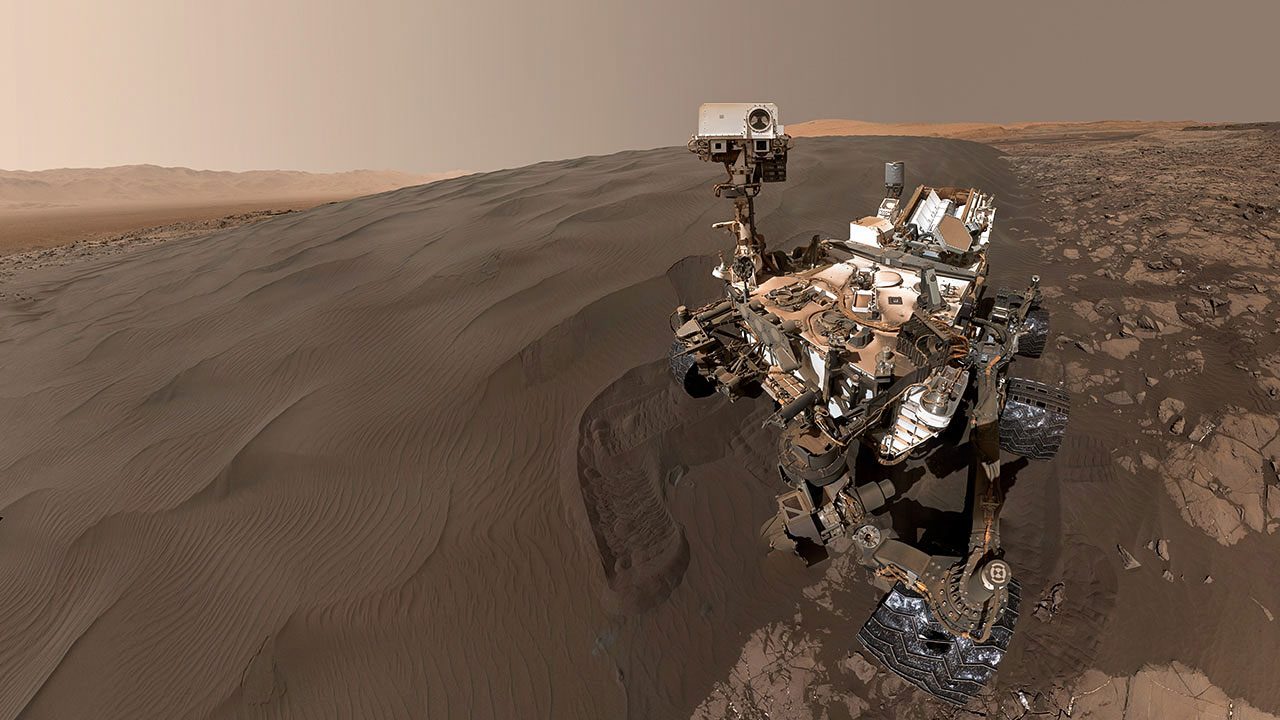
When wind blows over sand on Earth, it can produce two types of patterns: small ripples or large dunes. On Mars, there also appears to be a unique category in the middle: large ripples, with crests separated by a meter or more (seen here in this Curiosity rover “selfie”). Researchers discovered the pattern when the NASA rover stopped at a set of dunes in Gale crater in late 2015 and early 2016, and they first reported the discovery in March at the Lunar and Planetary Science Conference in The Woodlands, Texas. In a paper published online today in Science, they say the formations are fluid drag ripples, similar to those seen underwater in streambeds on Earth, and that their size is controlled by the thickness of the martian atmosphere. That means that the ripples, if preserved as patterns after the sand turns to stone, could be a “paleobarometer”. The scientists found ripple patterns in ancient rocks that are slightly smaller than the ones found across the planet today. That, they say, suggests that the ancient atmosphere was slightly thicker.
